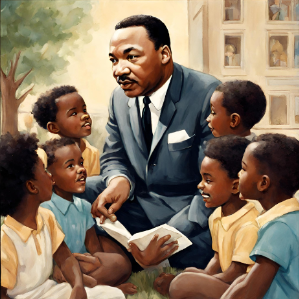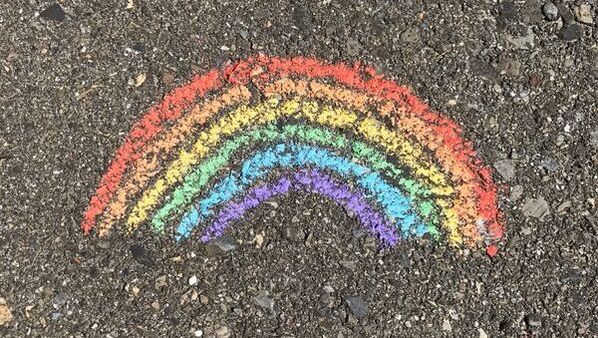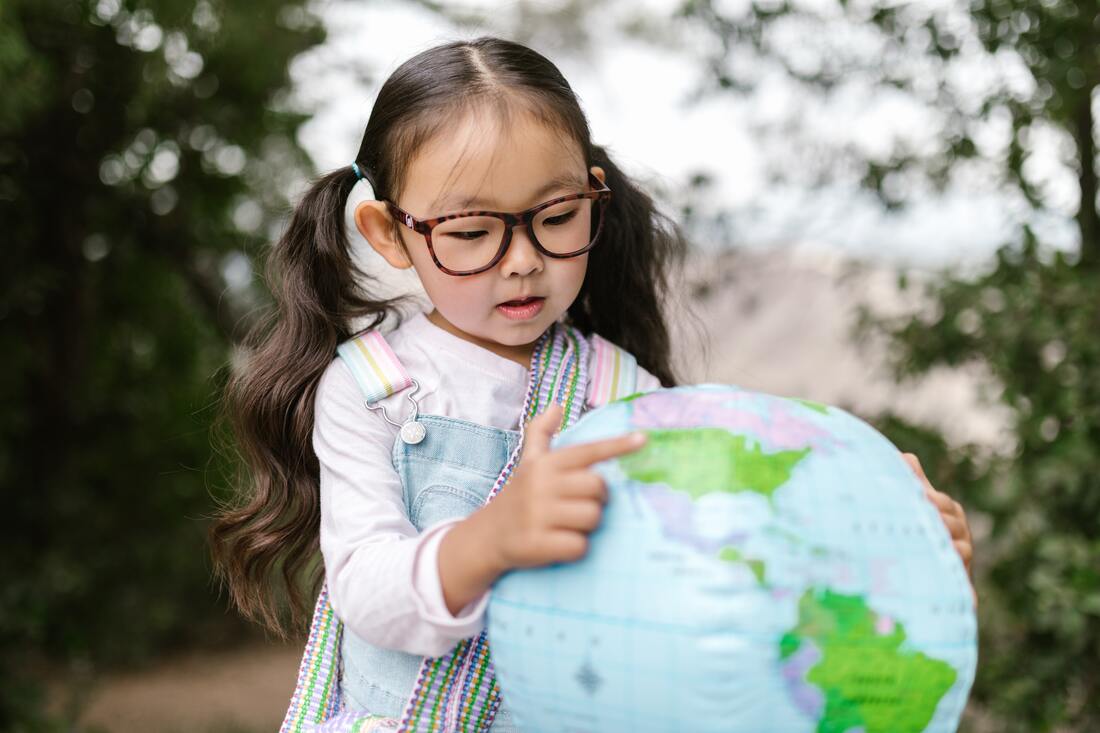|
As we get ready to begin our two week Travel theme, we are delighted to introduce a new member to our preschool family—Huddle the Traveling Rhino! Huddle is not just any stuffed toy; he's a special companion that has already embarked on exciting journeys with our School Director, Mx. Taryn. Huddle's story began during a visit to Massachusetts last summer when he crossed paths with Mx. Taryn, while they were home visiting family. Mx. Taryn stumbled upon Huddle at “owen and sage”, a charming local store. They were drawn to its unique selection for children and the delightful atmosphere created by the friendly staff. Since their “meetcute”, Mx. Taryn and Huddle have become inseparable, exploring the world hand in hoof. Huddle has been a cherished companion, and something that adds an extra layer of charm is the unique surgery he underwent—a special operation to equip him with an AirTag. This tiny device ensures that Mx. Taryn can keep track of Huddle's whereabouts at all times, ensuring he never strays too far. Over the past 8 months, Huddle has been a voyager, accompanying Mx. Taryn on numerous adventures. From cityscapes to natural wonders, Huddle has seen so much, making him a truly well-traveled Rhino! His AirTag not only adds a layer of safety but also allows us to follow Huddle's escapades in real-time. Huddle's AirTag even proved necessary when he was accidentally left in a rental car in Florida and needed to be tracked down and retrieved by local friends-what an adventure that was! What makes Huddle even more special is the plan to integrate his adventures into our preschool experience. Photos of Huddle's travels will not only be shared through future blog posts but will also be featured on our Instagram page and stories. Follow us on Instagram (@HeightsCoopPreschool) for a visual journey into Huddle's adventures and the enriching experiences he brings to our preschool community. But here's the even more exciting part—families within our preschool community will have the opportunity to request to have Huddle accompany them on an adventure! Starting next month, families can request to have Huddle join them on a special journey, creating memories and stories that will be shared with our entire preschool family. We will be implementing a policy and guidelines for participation to ensure a positive and enriching experience for all. Imagine the fun of having Huddle as a travel companion, exploring new places, and becoming a part of your family's unique story. If your family is planning a vacation, weekend getaway, or even a simple day trip, consider bringing Huddle along for the ride. Capture moments with Huddle and share them with us upon return, so that we can weave your family's adventures into the fabric of our preschool experience. This ongoing activity is not only a delightful experience for the participating families but also holds immense benefits for our preschoolers. As Huddle travels to various places, we will use the AirTag locations to create a map showcasing all the wonderful destinations he has explored. This map will serve as an interactive and educational tool, allowing our kids to learn about geography, our local community and different cultures. Furthermore, we aim to engage with our local community and build connections with businesses by sharing the places Huddle visits. We can’t wait to see Huddle featured in photos at local landmarks, parks, and businesses! We believe that this project will not only broaden the horizons of our preschoolers but also foster a sense of community and connection with the world around us. As Huddle continues to explore the world alongside our School Director, Mx. Taryn, and now, potentially, with your family, our preschool community eagerly anticipates the diverse stories and lessons he'll bring back to share with our students. A Reel compiling Huddle's adventures so far will be debuted on our Instagram on 1/22, providing a visual journey into the exciting experiences he has encountered. Don't miss out on the magic! Huddle the Traveling Rhino is not just a stuffed toy; he's a conduit for learning, curiosity, and the magic of exploration at Heights Cooperative Preschool. Get ready for a wild ride with Huddle.
1 Comment
As we approach Martin Luther King Jr. Day, it’s an opportune time for preschools to engage young minds in conversations about equality, justice, and the importance of embracing diversity. Introducing these concepts in an age-appropriate manner lays the foundation for fostering empathy and understanding among the youngest members of our community. Here’s how we can teach about racism and civil liberties in a way that resonates with preschoolers, along with some recommended children’s books to facilitate these discussions.
Embrace Diversity Through Storytelling Storytelling serves as a powerful tool to introduce complex themes to preschoolers. Opt for picture books that showcase characters from various backgrounds, experiences, and cultures. Share stories that highlight the beauty of diversity and the importance of treating everyone with kindness and respect. Recommended Books: The Colors of Us by Karen Katz: This delightful book explores diversity through the lens of different skin colors, celebrating the richness of our world. All Are Welcome by Alexandra Penfold: This picture book celebrates inclusivity, showcasing a school where everyone is welcome, regardless of their background. Introduce the Concept of Fairness Preschoolers are keen observers of what they perceive as fair or unfair. Use this natural curiosity to discuss basic concepts of fairness, kindness, and sharing. Highlight the idea that everyone should be treated equally, emphasizing the importance of understanding and appreciating differences. Recommended Book: It’s Okay To Be Different by Todd Parr: This colorful book encourages acceptance and celebrates diversity, emphasizing the uniqueness of each individual. Celebrate Heroes of Justice Introduce preschoolers to the concept of heroes who fought for justice and equality. Simplify the narrative to focus on the positive actions these individuals took to make the world a better place. Recommended Book: Martin’s Big Words: The Life of Dr. Martin Luther King Jr. by Doreen Rappaport: This age-appropriate biography introduces young readers to Dr. King’s life and his powerful words, emphasizing the importance of love and equality. Engage in Creative Activities Facilitate hands-on activities that encourage preschoolers to express their understanding of fairness, equality, and kindness. Simple crafts, drawings, or collaborative projects can help reinforce these concepts in a way that resonates with their developmental stage. Foster Open Conversations Create an environment where preschoolers feel comfortable asking questions and expressing their thoughts. Encourage open conversations about differences and similarities, and guide them in understanding that our unique qualities make the world a vibrant and wonderful place. Conclusion: Planting Seeds of Understanding As we celebrate Martin Luther King Jr. Day with our preschoolers, let’s remember that these young minds are the future stewards of a more just and inclusive world. By weaving age-appropriate discussions, engaging stories, and thoughtful activities into our educational approach, we plant seeds of understanding that have the potential to grow into a more compassionate and united community. Together, let’s nurture the values of equality, empathy, and respect in the hearts of our preschoolers. It’s the last day of Pride month – but it’s never too late to stand up for our values and shout out what makes us great! At Heights Cooperative, we believe that diversity makes us stronger and that celebrating love and self-expression is a year-round activity.
Diversity in Books Starting with Circle Time in our classrooms, we introduce different types of people, families, and cultures with books from diverse authors and communities. At Heights we make sure to talk about all different kinds of stories! Children are naturally curious about their visible differences like skin color, clothing, hair, braces, glasses, visible disabilities, etc. It’s also important to talk about the things we can’t see on the surface, like invisible disabilities, family dynamics, and more. Some of our favorites that speak to LGBTQ+ diversity are Love Makes a Family by Sophie Beer, Teo’s Tutu by Maryann Jacob Macias, ABC Pride by Louie Stowell and Elly Barnes, Julian is a Mermaid by Jessica Love, and Pink, Blue, and You by Elisa Gravel with Mykaell Blais. In this article for the Buckeye Flame, Mx. Taryn says, “It’s important to have books where the LGBTQ story isn’t the entire focus. Why can’t there just be a book where two dads pick their kid up, or you’re at a birthday party with two moms? It just needs to be normalized, kids need to see that as much as they see heterosexual examples.” On this note, we love books like Federico and All His Families by Mili Hernandez, Cookies and Cake & the Families We Make by Jennifer L. Egan, Gabrielle’s Gift by Lerone Landis, and Miss Molly Learns Responsibility by Kathleen S. Pero. And we also want to shout out the book Bodies Are Cool by Tyler Feder – which is about body diversity including size and ability, but can easily incorporate education about gender expression in different bodies too. Every Family is Different At Heights, you might have noticed a few changes to the words we use to describe family members. Not every student has one mom and one dad, so we talk about people’s grown-ups! This covers so much more than LGBTQ+ families too – if a student lives with an aunt or uncle, grandparent, or other adult, we want their families to be recognized just as much as students who live with mom and dad. The assumption that everyone has a mom and dad, and that they are happily married, isn’t true for many people, so we celebrate all kinds of families and encourage our students to appreciate their own unique family structure. This includes friends of the family and non-related aunties and uncles too! Maybe this summer, you could invite all of your family (blood related and not!) to share in celebration of everything you’ve accomplished and built together. Kids Understand and Celebrate Differences! It’s so beautiful to see the ways that our students learn about and appreciate the differences between themselves and their friends. Whether that means using different pronouns, recognizing cultural and racial differences, or finding ways to accommodate and include disabled friends, at Heights we are all about celebrating the things that make us different and bring us together! Photo by Alex Jackman on Unsplash Kari BurchDr. Kari is an Occupational Therapist and Certified Transformational Parenting Coach. She loves following her heart and helping others do the same, especially when it comes to changing the way we parent the next generation of leaders and learners. Earth day is a wonderful day to teach kids about a variety of topics relating to respecting and loving planet earth. Here are a few fun and simple activities to try for all ages and interests to help your child grow their love of our world.
Recycled Art Find trash or recyclable materials around your home you can use for a painting project. You can use items such as toilet or paper towel rolls, boxes, ribbon wheels, paper bags, and more. Use paper bags from the grocery store or a posterboard as the background. Dip the ends of the toilet or paper towel rolls in some paint and make circle shapes on the paper! You can talk about how you can repurpose trash or single use items, and give them a second life and use before throwing them away.
See examples and learn more about this idea from No Time for Flash Cards: Recycled Art For Earth Day - No Time For Flash Cards Outside Observations This one is simple but beautiful. Go outside and make observations about the earth and nature (even if it’s just in your yard!) Collect sticks and twigs, pine needles, or leaves. Collect small rocks. Notice different kids of weeds or flowers. Look for wildlife or signs of wildlife such as birds, squirrels, insects, or bugs. You can talk about how all of these work together to make a beautiful planet. We are so lucky to have so much to look at outside! Earth Day Play Dough Did you know it's super simple to make your own homemade play dough? Try this recipe from Pre-K Pages! Along with green and blue play dough, find stones and twigs from outside. You can form the dough into land with trees (made with green dough for the leaves and twigs for the trunk). You can make the ocean with blue play dough or sculpting clay, and fill with fish made from play dough, seaweed made from green play dough, and stones for the bottom of the ocean. Here’s more inspiration: Earth Day Theme Play Dough for Preschool - Pre-K Pages. You can talk about how some animals live on land and some live in the water, even incorporating some of your kiddo's favorite books or tv show characters and identifying their habitats. Enjoy talking about the earth and all its diversity! Visit Your Local Library for Earth Day Activities There are countless free community resources available locally for Earth Day, including at the library! Check out your local library or community center for Earth Day story times, art projects, and more. Litter Bug Jaunt Take a little walk around your neighborhood and pick up trash. This is a great time to instill messages about littering and how to keep our earth clean and healthy. For older kids, you can teach about the principles of "Leave No Trace" to keep the planet free of the impact of our trash. Will you give one of these ideas a try? Report back and tell us how it went! P.S. We're raising money for sustainable initiatives including new outdoor play spaces and low waste materials. You can donate here. |



 RSS Feed
RSS Feed